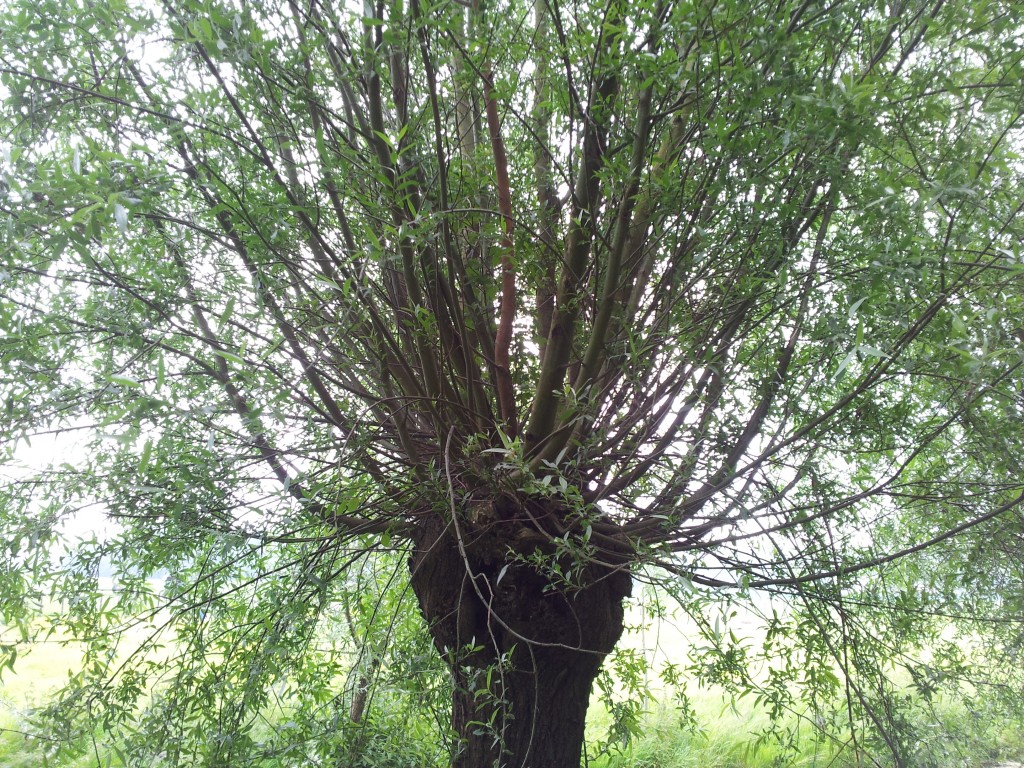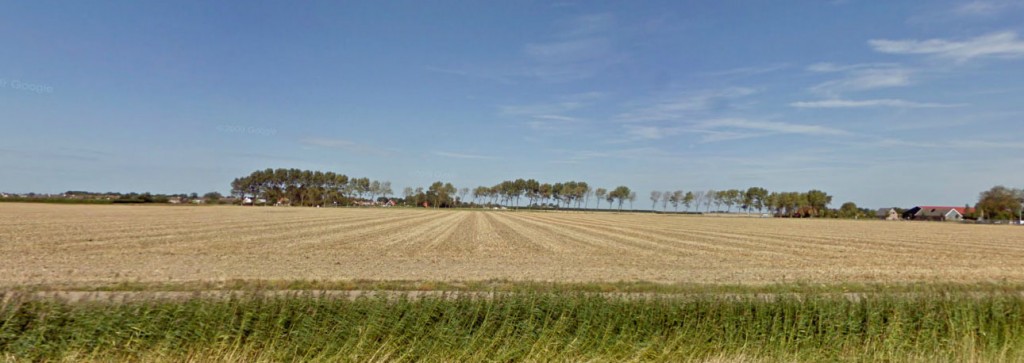
Willow is the best kind of firewood. If we abandon the polluting iron stove.
Using “unusable” soft wood to warm your house
Soft varieties of wood are generally considered to be unsuitable for heating your house. Hardwood, like oak, is the preferred fuels for most people. But actually it is, or should be, willow!
The problem with iron wood stoves
The reason hardwoods are preferred by most wood stove owners is that they produce long-lasting fires, while soft woods need to be replenished more often. When using an iron stove as main heating system, it needs to burn continuously throughout the day. Once you stop burning, the stove will cool down rapidly. But it doesn’t stop there. Due to the design of a standard iron wood stove, the burning temperature rarely exceeds the 500 degrees Celsius (932 degrees Fahrenheit), meaning the burning process is far from complete. The result is not only a lot of ash with unburned components, but also wood-tar creosote in the flue pipe and, probably most alarming, loads of pollutants which are dumped in the atmosphere. No wonder authorities are inclined to ban wood stoves from more densely populated areas [1].
Really high temperature burning inside a conventional wood stove is hard to accomplish. The heat of the flames easily escapes from the stove, meaning the fire itself cannot reach a temperature at which clean burning starts taking place. This is inherent to iron stoves: heat is delivered fast to the surroundings and diminishes fast when the fire stops burning. Injecting more air for higher flame temperatures can not only damage the stove, but also doesn’t lead to the desired result: while the wood consumption increases, most of the heat just escapes through the chimney.
But the story continues. Iron stoves also deteriorate the indoor air quality. Due to the convection an iron stove induces, dust particles start circulating, land on the hot surface of the stove, are scorched and go airborne again, further reducing air quality. Warmth in the form of radiation is preferred over convection. It’s perceived as more comfortable and a lower overall temperature is required to feel warm when heating with a radiating source of warmth, rather than a convector.
All in all the iron stove performs poorly. You may ask why it is so successful, but that’s mainly a matter of what people are used to. If the standard becomes the iron stove, people tend to buy an iron stove. But the best solution is a stove which opposes the above described characteristics in many ways.
The mass heater
The masonry heater is a type of stove which has been around for many centuries. Contrary to iron stoves these heaters are able to store a large amount of heat. The “mass battery” is charged during a short burn with a small bundle of wood. The fire burns at temperatures exceeding 1100 degrees Celsius (2012 degrees Fahrenheit), ensuring a clean burn, free of creosote deposition in the flue pipe and minimal amounts of ash. The mass of the masonry heater is charged with heat, which is radiated in the hours between burns. Larger masonry heaters only need to be burned once every 24 hours. The surface doesn’t get nearly as hot as an iron stove and can be touched without fear of burning your skin. Fuel demand of a masonry heater is a fraction of that of an iron stove. On average five times lower. And while the iron stove performs best when using hardwoods, the masonry stove prefers soft woods. After all, we don’t want slow smouldering, but a fast, clean, high temperature burn.
Masonry stoves nowadays appear in many forms, therefore a more suitable name is “mass heaters”. Masonry based stoves are still popular, but materials ranging from loam (cob) to special concretes are now also used.

Willows pollarded in different years. Picture shows willows in a park.
Willow wood warrants widespread warmth
There’s no big difference in the amount of embedded energy in different kinds of wood. For example, willow will produce around 13 to 18 megajoule per kilogram [2]. Oak, one of the hardwoods, shows comparable values. However, due to the lower density, willow is less popular among iron stove owners. It simply burns too fast. But that’s exactly what you want if you’re the proud owner of a mass heater! All in all, willow proves to be the best fuel choice for a mass heater. Cuttings from willow pollarding are ideal, especially when split into thin pieces of wood. A bundle of these small pieces in the fire chamber of the mass stove will burn short and violently, at high temperatures. A perfect recipe for highly economical, clean production of warmth. And comfort.
Growing willow
Soil of typical agricultural land contains almost no organic material and has no ability to store CO2 [3]. Undisturbed natural soils are phenomenal sinks for CO2, able to absorb 8 metric tonnes of CO2 per hectare. [4]. Ideally, agriculture should be practiced in a much more natural way. If only there was an alternative for the current intensive agricultural methods. A way of farming which is in full unison with nature, but still able to provide us with enough food and fuel to ensure a healthy way of life. Oh, but there is! And it’s called permaculture.
It’s beyond the scope of this story to elaborate on the details of permaculture. There are loads of information on the subject and I will suffice with merely stating that permaculture is not only able to feed the world, but also in a way that is in full harmony with nature. The division between cultivation and natural land diminishes. Besides, permaculture is not only about sustainable agriculture, but engages also in green architecture and other aspect of everyday living.

Most agricultural land is a biological wasteland, unable to store carbon dioxide.
Willow plantations
Part of the many square kilometres of biologically depleted farmland can easily be utilised for growing willow. Willow is little demanding regarding soil composition and once established it starts to absorb CO2. 1.8 kilogram of CO2 is converted to make one kilogram of dry (willow) wood. Also, the tree will grow up to five times faster to compensate for the pollarding. Part of this extra biomass will be pollarded again at some point, but the rest is stored in a more permanent way in the trunk and root system [5]. But the CO2 absorption does not stop here. If left alone and no heavy machinery is compacting it, the soil can absorb huge amounts of carbon too. This, combined with the fact that the trees are only pollarded and not removed results in a superb CO2 trap, storing this greenhouse gas indefinitely.
Not CO2 neutral, but even CO2 negative
Converting farmland to willow plantations for the purpose of heating our homes can be more than CO2 neutral, the balance can even shift to a CO2 negative result! The more we use high efficient mass heaters, the more CO2 is stored in willow plantations. And by implementing permaculture methods, we can make these plantations oases of rich biodiversity. And you know what? There are no over-optimistic sides to the story. It’s as simple as making the choice to convert to sustainable methods. All the knowledge is already there!
How much wood is needed to warm your house?
The amount of wood to heat your home depends on many factors.The extent to which a house is insulated, the size of the house, the location, etc. In the Netherlands the average natural gas use for heating is 1200 cubic metres per year. Since gas has a caloric value of 30 megajoules per cubic metre, the total energy need is 36 gigajoules per year.
One tonne of willow has a caloric value of 13 gigajoule per tonne, meaning three tonnes of wood should be enough to keep warm throughout the year when using an efficient mass heater. All this without additional heating from other heat sources like a central heating system. Since a hectare of willow plantation produces at least ten tonnes of woods annually, three households can be kept warm with each hectare of willow.
Still, the average mass heater owner will not recognise these numbers as accurate. A house in which attention is paid to proper insulation, the use of passive solar heat and other energy saving solutions will only require a fraction of the amount of wood calculated above. And that is just as well, since farmland has other uses too, like food production.
Willow as a sustainable biofuel
While most biofuels do not have a very good reputation, willow has the potential to be highly sustainable. If willow cuttings are not processed by heavy machinery, transported over long distances and if the land they grow on is used in a natural and multifunctional fashion, willow wood fuel has a bright future.
References:
[1] www.guardian.co.uk/world/2013/jul/03/fire-smoke-wood-stoves-burning
[2] www.seai.ie/Renewables/Bioenergy/Willow_Best_Practice_Guide_2010.pdf
[3] www.marcsiepman.nl/2013/06/12/voedsel-en-permacultuur
[4] www.marcsiepman.nl/2012/06/06/hoe-de-bodem-co2-op-kan-slaan
[5] www.thewillowbank.com/willow.firewood.facts.htm